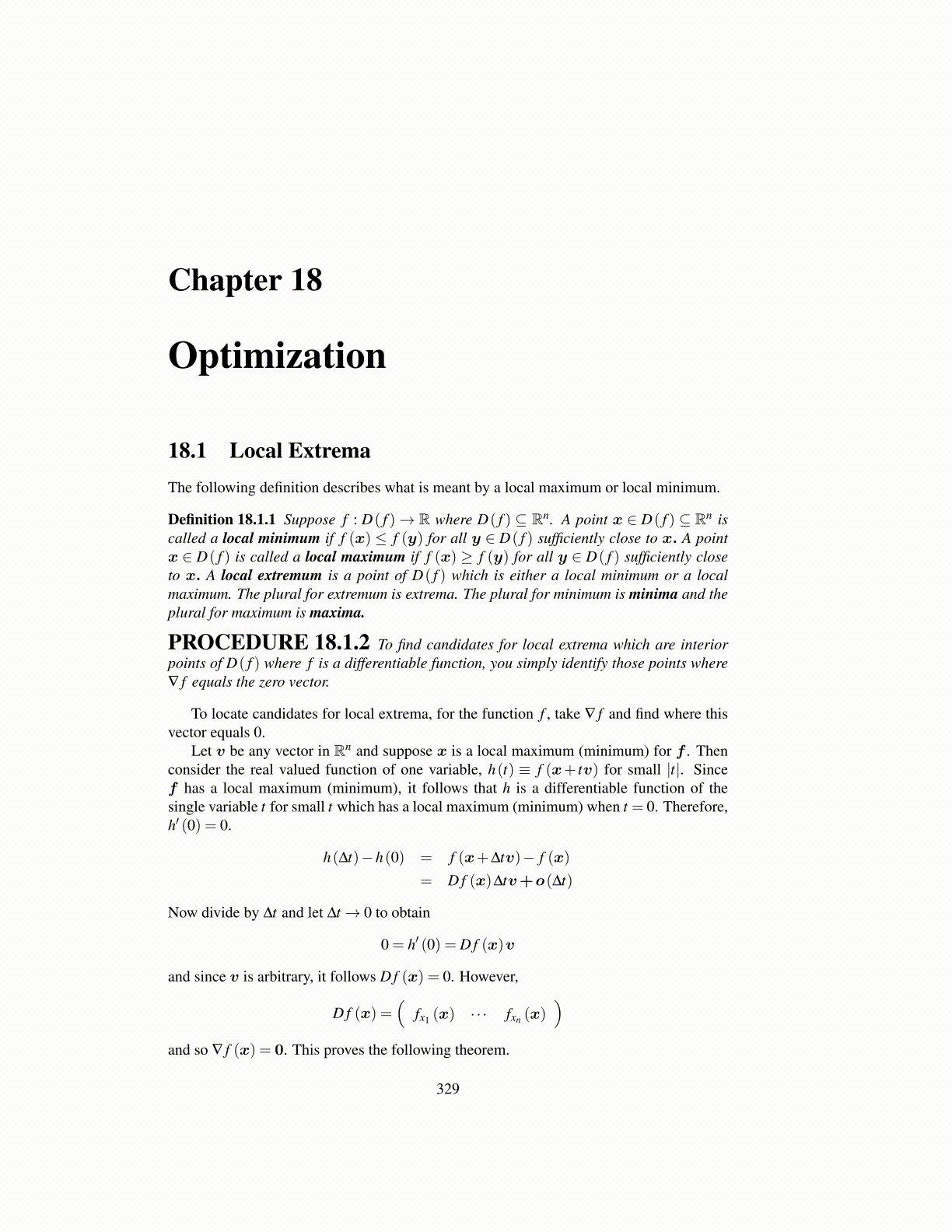
Chapter 18
Optimization
18.1 Local ExtremaThe following definition describes what is meant by a local maximum or local minimum.
Definition 18.1.1 Suppose f : D( f )→ R where D( f ) ⊆ Rn. A point x ∈ D( f ) ⊆ Rn iscalled a local minimum if f (x) ≤ f (y) for all y ∈ D( f ) sufficiently close to x. A pointx ∈ D( f ) is called a local maximum if f (x) ≥ f (y) for all y ∈ D( f ) sufficiently closeto x. A local extremum is a point of D( f ) which is either a local minimum or a localmaximum. The plural for extremum is extrema. The plural for minimum is minima and theplural for maximum is maxima.
PROCEDURE 18.1.2 To find candidates for local extrema which are interiorpoints of D( f ) where f is a differentiable function, you simply identify those points where∇ f equals the zero vector.
To locate candidates for local extrema, for the function f , take ∇ f and find where thisvector equals 0.
Let v be any vector in Rn and suppose x is a local maximum (minimum) for f . Thenconsider the real valued function of one variable, h(t) ≡ f (x+ tv) for small |t|. Sincef has a local maximum (minimum), it follows that h is a differentiable function of thesingle variable t for small t which has a local maximum (minimum) when t = 0. Therefore,h′ (0) = 0.
h(∆t)−h(0) = f (x+∆tv)− f (x)
= D f (x)∆tv+o(∆t)
Now divide by ∆t and let ∆t→ 0 to obtain
0 = h′ (0) = D f (x)v
and since v is arbitrary, it follows D f (x) = 0. However,
D f (x) =(
fx1 (x) · · · fxn (x))
and so ∇ f (x) = 0. This proves the following theorem.
329